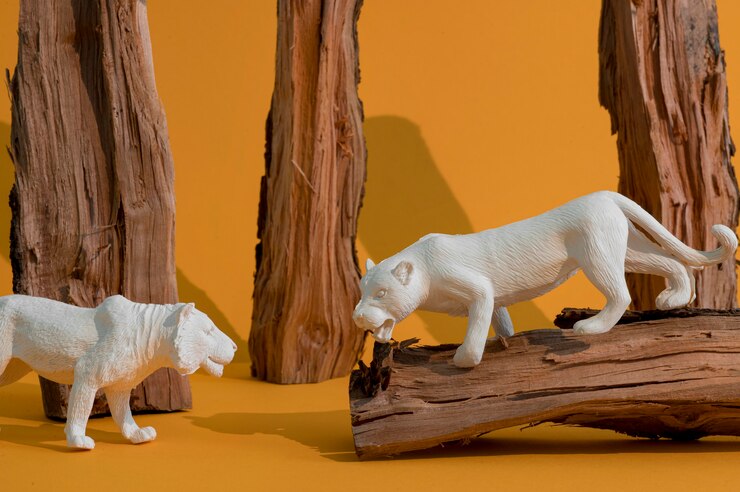Creating realistic animal movements in 3D animation is a complex yet rewarding endeavor that requires a strong grasp of animal anatomy, biomechanics, and specialized animation techniques. When executed well, realistic animal movements can bring characters to life, making them more engaging and believable for viewers. This level of animation quality is frequently pursued by animation studios in Hollywood, known for their commitment to innovation and excellence. In this blog, we will explore the steps, tools, and expertise involved in creating lifelike animal animations using 3D animation services.
1. Understanding Animal Anatomy and Biomechanics
Creating realistic animal movements begins with understanding how animals move in real life. This involves studying the anatomical structures of various animals, including their skeletal, muscular, and joint structures. Animals have distinct body mechanics, which translate into unique movement patterns, balance, and posture. Knowledge of animal anatomy allows animators to accurately replicate these movements in a digital environment.
Key Aspects of Animal Anatomy for Animators
- Skeletal Structure: Animals’ bones provide the framework for movement, and understanding this structure is crucial for realistic animations. By studying bone placement and function, animators can more effectively create joints and movement pathways.
- Muscle Dynamics: Muscles play a huge role in movement, allowing for contraction and extension that drive motion. An animation studio in Hollywood often employs specialists to map out the musculature of animals for hyper-realistic movement.
- Gait Patterns: Different animals have unique gaits, such as walking, trotting, or galloping. Observing these gait patterns and their transitions is vital in mimicking realistic animal movement in 3D animation.
2. Reference Collection and Observation
Observation is an essential step for animators creating realistic animal movements. Watching real-life footage of animals in motion helps animators gain insights into their behavior, gait, and responses to different stimuli. Collecting references from video footage, wildlife documentaries, and even on-site observations can provide critical details for realistic animation.
Many 3D animation services integrate motion-capture techniques to gain precise data on movement patterns. However, since it’s challenging to place motion-capture suits on wild animals, studios often rely on motion-capture data from similar animals or skilled animators to replicate these movements manually.
3. Rigging: Building the Framework for Movement
In the 3D animation pipeline, rigging is the process of creating a digital skeleton for a character or creature. Rigging allows animators to control and manipulate the character’s body, and for realistic animal movements, the rig must accurately simulate the anatomy and biomechanics of the chosen animal.
Types of Rigs Used in Animal Animation
- Skeletal Rigs: These rigs define the primary bone structure of the animal and allow for basic control over body parts. Animators often use skeletal rigs to set up fundamental movement patterns, such as walking or running.
- Muscle Rigs: Muscle rigs simulate how muscles contract and stretch with movement, giving the animal a realistic appearance as it moves. High-quality 3D animation services from top animation studios in Hollywood use muscle rigs to add depth to animal animations, especially for muscular or high-motion animals like horses or big cats.
- Skin and Fur Rigs: These rigs are critical for adding skin and fur dynamics that move naturally as the animal changes posture or speed. Skin and fur dynamics enhance realism by reflecting how fur bounces or flows, depending on the animal’s movement.
4. Animation Techniques for Realistic Movement
After rigging, animators bring the animal model to life by applying various animation techniques. This stage involves animating each body part to follow realistic motion paths based on real animal behavior.
Key Animation Techniques for Animal Movement
- Keyframing: In keyframe animation, animators manually set specific poses for the animal at key points in the movement sequence. This technique is particularly effective for creating fluid, realistic gaits.
- Procedural Animation: Some studios use procedural animation to simulate aspects of animal movement, such as tail swaying or ear movements. This automated approach adds secondary motion elements that enhance realism.
- Inverse Kinematics (IK) and Forward Kinematics (FK): IK and FK are used to control limbs and joints. With IK, the end of a limb (e.g., a paw) remains fixed as other joints move, while FK controls joint movement in a set chain. These techniques are essential for replicating realistic joint movements.
A skilled animation studio Hollywood often combines these methods, using keyframing for the main movement and procedural techniques for fine details like muscle jiggle or tail flicks.
5. Advanced Dynamics and Physics Simulations
Adding physics simulations is one of the most powerful ways to ensure animal movements appear natural. These simulations can control aspects such as gravity, weight, and collisions, which impact how an animal’s body interacts with its environment.
Physics-Based Techniques
- Gravity Simulation: Gravity affects how animals balance and move across terrain, especially in jumping, running, or climbing scenarios.
- Collision Detection: Collision detection ensures that the animal’s limbs do not intersect with objects or the ground unrealistically.
- Weight Dynamics: Weight influences the realism of movement, such as how a large animal like an elephant moves differently from a small animal like a rabbit.
Top 3D animation services use physics engines to add realism to animal animations, providing accurate body mechanics based on the animal’s size, shape, and environment.
6. Adding Details: Skin, Fur, and Facial Animations
The realistic appearance of animals is greatly enhanced through detailed skin and fur simulations. Facial animations, on the other hand, help to convey subtle emotions, which adds a layer of engagement.
Skin and Fur Simulation
Skin and fur simulation involve creating a coat that reacts realistically to movement and environmental factors. Animation studios in Hollywood often rely on hair and fur simulation tools, like those in Autodesk Maya or Blender, to ensure that fur moves believably with the animal’s body. These simulations are essential for animals with long or thick fur, such as wolves or lions.
Facial Animation and Expressions
Though animals may not have facial expressions as varied as humans, small details—like eye movement, ear twitching, and snout adjustments—are important for conveying lifelike qualities. Advanced 3D animation services offer tools that allow animators to add subtle, expressive facial animations, which are essential for creating engaging and believable characters.
7. Lighting and Rendering for Realistic Presentation
Once the movement and anatomy are perfected, the final steps involve lighting and rendering. These steps ensure that the animal looks believable within its environment. Lighting can highlight fur texture, muscle definition, and the play of shadows on the animal’s form, adding to the realism.
Rendering Techniques
- Ray Tracing: This rendering technique creates realistic lighting, shadows, and reflections, making the animal look like it’s actually part of the scene.
- Global Illumination: Global illumination simulates indirect lighting, which creates a softer, more realistic look.
- Ambient Occlusion: This technique enhances details by adding shadows to small crevices, like under fur clumps, giving the animal depth and texture.
8. Post-Processing for Final Touches
After rendering, the animation is usually fine-tuned with post-processing techniques. These adjustments can enhance color grading, brightness, and contrast, making the animal stand out more realistically.
Post-Processing Effects
- Motion Blur: Adding motion blur can enhance fast-moving actions, like sprinting or jumping, and make the animation feel more dynamic.
- Color Correction: Adjusting color can add warmth or coolness, depending on the environment, and improve the realism of the final scene.
Real-World Applications of Realistic Animal Animations
Realistic animal animations have applications across various industries, from films and documentaries to games and educational simulations. In Hollywood, 3D animation services bring animals to life in movies, creating characters that are both engaging and believable. Game developers, too, rely on realistic animations to immerse players in the world they create. In the educational field, realistic animal movements can help in teaching biology and environmental science.
Conclusion
Creating realistic animal movements in 3D animation is an art form that combines scientific knowledge, technical skill, and creativity. By understanding animal anatomy, using advanced rigging and animation techniques, and applying realistic physics and rendering, 3D animation services can achieve lifelike animal animations that captivate and engage audiences. Animation studios in Hollywood are at the forefront of this field, constantly pushing the boundaries of what’s possible in digital animal representation.



